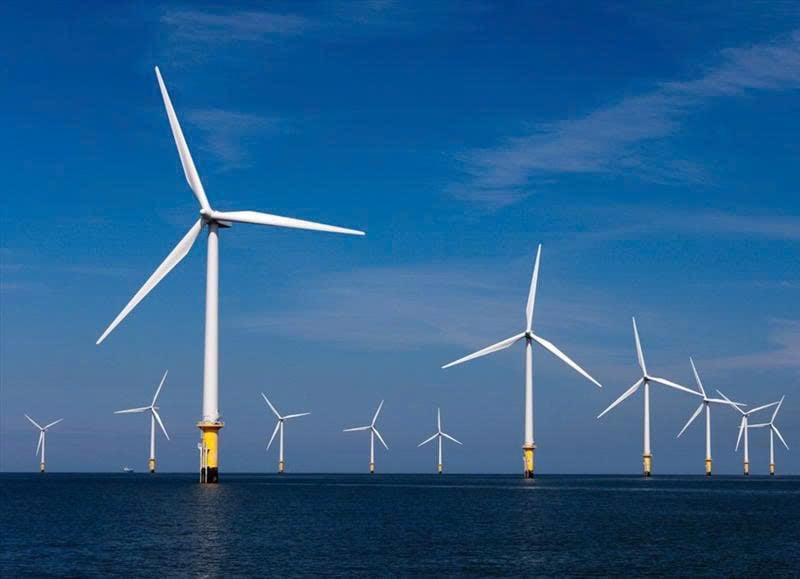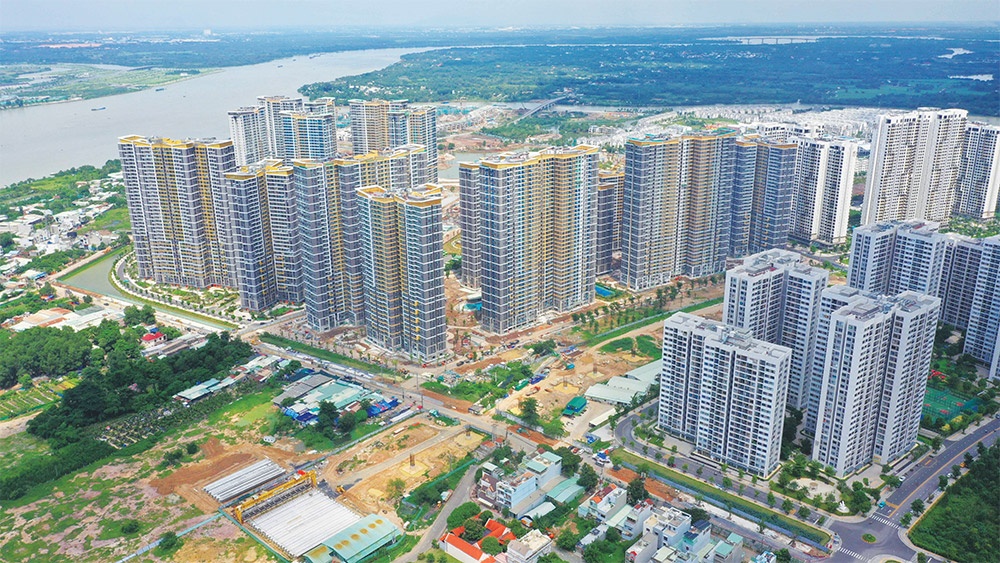Project
Lenders support dreams of homeownership for youth
Published
10 months agoon
Following the PM’s directive at a February 11 conference with commercial banks, (see Page 16), Asia Commercial Joint Stock Bank (ACB) launched the first home loan package for young individuals aged 18-35 with stable jobs and also a regular monthly income, starting from February 13.
 |
| Lenders support dreams of homeownership for youth, Source: freepik.com |
The loan offers a tenure of up to 30 years, and a preferential rate starting at 5.5 per cent for the first three months. After the initial three months, the interest rate is determined based on the base rate plus a margin of 3.5 per cent.
Borrowers can also choose fixed interest rate packages ranging from 12 to 60 months, with rates varying from 6.5-8.7 per cent per annum..
“For young individuals with stable employment and a long working horizon, the risk associated with these loans is relatively low. Moreover, the first home loan package can also be considered a financial solution to ensure stable housing, facilitate career development, and improve quality of life,” said an ACB representative.
After launching a credit support programme for young homebuyers, ACB is taking the lead in partnering with real estate developers to finance mid-range housing projects, making it easier for young people to own their first home.
“ACB will work alongside real estate developers to increase the supply of mid-range housing by providing funding for reasonably priced projects, along with dual credit packages that support both investors and homebuyers,” said chairman Tran Hung Huy. “A comprehensive partnership between the bank and major real estate corporations ensures construction progress and price control, enabling young people to achieve homeownership more easily.”
Commenting on the preferential home loan policy for individuals under 35, Tran Manh Hoang Viet, financial planner at wealth management firm FIDT, argued that reduced interest rates alone were insufficient.
“For the policy to be truly effective, the loan process must be simple and transparent, minimising procedural barriers that hinder accessibility. Additionally, the quality of affordable housing must be controlled to ensure buyers are not exposed to legal or construction risks. Simultaneously, a flexible financial support mechanism should be in place for borrowers facing temporary difficulties, preventing an increase in bad debt or defaults,” he added.
PVcomBank is currently offering a real estate loan package with an interest rate starting at 3.99 per cent per annum for the first three months. The loan term extends up to 35 years, featuring a flexible repayment plan tailored to borrowers’ financial capacity.
The bank also provides a principal repayment grace period of up to 36 months, a maximum loan limit of $2 million, and a maximum loan-to-value ratio of 85 per cent. For borrowers opting for a fixed interest rate, the rate is 6.2 per cent for 12 months and 6.99 per cent for 18 months.
SHB has also introduced an interest rate ranging from 6.2-9.5 per cent per annum, with a post-incentive margin of 3.0-3.9 per cent per year, depending on the lending package and customer’s credit rating.
Several banks are offering extended loan terms of up to 35 years, with a maximum principal repayment grace period of five years. Borrowers can schedule repayments flexibly, choosing from options such as equal principal payments, step-up principal payments, or payments aligned with their cash flow on a monthly, quarterly, or semi-annual basis.
At ABBANK, home loans are available for up to 35 years. Under its latest preferential credit programme, customers can secure a home loan with an interest rate starting from 7.3 per cent per annum.
“With a simplified loan process and ultra-fast approval within just five hours, covering up to all the financing needs, customers can secure their dream home without financial worries,” said an ABBANK representative.
Meanwhile, some other major lenders have stated that they are awaiting specific guidance regarding the scale and interest rates of the new loan package for young first-time buyers.
On February 12, the Ho Chi Minh City Real Estate Association submitted a proposal to the prime minister and the Ministry of Construction, recommending a mechanism allowing young individuals aged 18-45 to purchase their first home with an interest rate of 6-7 per cent per annum, secured by the purchased property, over a 10-15 year term.
Hoang Tien Dat, a clerk at Techcombank, noted that the primary concern when taking a home loan is financial planning.
“Financial leverage is only suitable within a 5-7 year timeframe because extending beyond this period results in a substantial total expenditure. Moreover, once the low fixed-rate period ends, the interest rate becomes variable, aligning with market rates,” Dat said. “This floating interest rate can escalate to 9-10 per cent, imposing a significant financial burden. Youngsters tend to sell houses after a few years due to overwhelming financial pressures.”
Pham Duc Toan, CEO of EZ Property, suggested that an appropriate interest rate for young homebuyers would be around 5.5 per cent per annum, as at this rate, a young family would only need to pay $280-320 per month in both principal and interest.
“If banks nationwide implement preferential home loan packages for individuals under 35, it would provide significant social security benefits for young people struggling to secure stable housing. This group represents the core workforce, and prioritising their housing needs would allow them to focus on their careers and contribute effectively,” added Toan.
|
Phi Duc Anh, tour guide
I am considering a mortgage to purchase my first home. I have been saving for several years, but with rising property prices, it is nearly impossible to buy a house outright. A bank loan would allow me to secure a home now, rather than waiting many more years to accumulate enough funds. My main concern is ensuring that the monthly repayments remain manageable while still allowing me to maintain my current lifestyle and savings. I am also looking at various mortgage packages to compare interest rates, repayment terms, and fees. Given the current market conditions, a well-structured loan is almost essential for young professionals like myself who wish to own property rather than continue renting indefinitely. It could be a good opportunity, but it depends on an individual’s financial situation. Tran Luu Ly, lecturer, Thuy Loi University
Currently, I am not planning to take out a loan for a home, but it is something I have been thinking about for the near future. While owning a home is an important goal for me, I want to be certain I can comfortably afford both the down payment and the monthly instalments. Additionally, I am closely monitoring the real estate market to see whether conditions become more favourable for buyers in the coming years. It really depends on one’s financial readiness. While it is true that property values tend to rise over time, taking on a mortgage too early could put unnecessary financial strain on young buyers. Some people might be better off waiting a few more years to strengthen their financial position rather than rushing into a commitment that could become difficult to manage. Ngo Nhat Linh, legal consultant
Several banks like Vietcombank, BIDV, Techcombank, and MBBank have introduced home loan schemes with low interest rates applicable for an initial period ranging from six months to two years, after which the rates are subject to increase. These packages present a noteworthy opportunity. However, it is crucial to evaluate both the potential benefits and associated risks when assessing a loan. For instance, if one possesses a stable income and a clear financial plan, this could represent a prudent step towards securing long-term housing, rather than perpetually renting a property. Nevertheless, such an opportunity is only advantageous if the prospective buyer is well-prepared financially, with savings amounting to at least one-third of the property’s value and a stable income. Ngo Quoc Viet, freelance real estate agent
The current preferential policies represent a promising opportunity for young individuals seeking to acquire their first home. Following a period of stagnation in the real estate market, property prices have now adjusted to more reasonable levels, while banks are introducing a variety of incentives to stimulate demand. For those who have accumulated an initial sum of savings, coupled with a stable income, this is a favourable chance to establish long-term residence. The home loan packages are highly attractive, with a 30-year repayment term helping to alleviate the burden of monthly debt obligations. Furthermore, the fixed interest rate of 5.5 per cent for the first three months is relatively competitive compared to the prevailing market rates. Ta Hoai Thuong, marketing specialist, Shopee
Given the current preferential policies, this is perceived as a relatively suitable time for young individuals who have accumulated some capital. Although property prices, whether for land or apartments in the city centre, remain high, it appears that Hanoi will have numerous new apartment buildings this year. Should additional bank loan packages with preferential interest rates become available, it would represent an excellent opportunity for my family to acquire our first house. The loan scheme is particularly appealing, especially with its extended repayment term of up to 30 years, which would alleviate the pressure of monthly repayments. The fixed preferential interest rate during the initial five-year period provides borrowers with a greater sense of security, particularly for those whose situation is not entirely comfortable. |
You may like
Project
Vietnam’s Exclusive Economic Zone boasts over 1,000 GW of wind power potential: report
Published
8 months agoon
April 27, 2025Vietnam’s Exclusive Economic Zone (EEZ) has a wind power potential of 1,068 GW, nearly 470 GW more than previously estimated, according to a report released Friday by the National Center for Hydro-Meteorological Forecasting (NCHMF).

An offshore wind power project in Vietnam. Photo courtesy of VnEconomy.
The report, titled “Detailed Assessment of Wind Resource Potential in Coastal (up to 6 Nautical Miles) and Offshore Areas in Vietnam,” was conducted by the NCHMF with support from the United Nations Development Program (UNDP) and the Norwegian Embassy.
This wind potential was measured at a height of 100 meters above sea level, said Mai Van Khiem, director of the NCHMF. He noted that from November to February each year, wind capacity accounts for half of the annual total – peaking in December and gradually decreasing, with the lowest levels recorded in May.
The southern offshore areas account for 894 GW of this potential, while the northern areas contribute 174 GW.
In nearshore zones (up to 6 nautical miles), the total technical wind power potential is 57.8 GW. The Bac Lieu-Ca Mau region alone contributes nearly 30% of this, while the Ninh Thuan-Binh Thuan area accounts for 24 GW. Although the Quang Tri-Hue region has lower potential, it offers stable wind speeds during the winter months. The Red River Delta has a modest potential of 0.17 GW.
Compared to previous assessments, such as the World Bank’s 2021 study and data from the Global Wind Atlas (GWA), this report provides more detailed and higher-resolution information, both spatially and temporally.
“Notably, the EEZ potential outlined in this report exceeds the World Bank’s estimate by 469 GW, primarily due to the broader scope of the survey and more refined climate modeling using domestic observational data,” the research team explained.
They also emphasized the use of the Weather Research and Forecasting (WRF) model customized specifically for Vietnam, which enhanced the accuracy of the results.
The findings are based on wind data collected from 26 coastal and island meteorological stations, satellite sources from CCMP, ASCAT, and SCATSAT-1 (covering 30 years of ocean surface wind data), as well as buoy data from Nghe An province and seabed depth measurements.
A key innovation in this report is the integration of potential impacts from extreme weather events. Typhoons and tropical depressions occurring between August and October pose structural and safety risks to wind turbines. Meanwhile, strong winds and high waves during the northeast monsoon season can hinder access to and maintenance of offshore wind systems.
To support model calibration and long-term observation, the research team recommends increased investment in offshore wind monitoring stations at heights exceeding 100 meters. They also suggest incorporating these findings into offshore wind development strategies and national marine spatial planning.
Additionally, the team advocates for expanding research into other forms of marine renewable energy, such as wave, tidal, and ocean thermal energy.
“Vietnam has some of the most promising offshore wind resources in the region, creating a strong foundation for the development of a large-scale offshore wind industry. This will contribute to energy security, green economic growth, and the achievement of net zero commitments,” they said.
The study provides a vital scientific basis for policy planning, identifying priority development zones, attracting investment, building infrastructure, and training the future offshore wind workforce, the team added.
Hoang Duc Cuong, deputy director of the Department of Meteorology and Hydrology, emphasized that Vietnam lies within a strong and stable Asian monsoon belt, giving it abundant wind energy potential. He noted that this renewable source will play a key role in meeting the country’s climate change goals and advancing a low-carbon economy.
However, he also warned that marine-based natural disasters are highly complex and could significantly impact the stability of offshore wind operations and energy generation.
The ever-changing status of the global economy following last week’s tariff shocks continue to loom large among investors in Vietnam’s real estate market.
 |
| All real estate segments are at risk of losing appeal if high global tariffs are eventually put in place, photo Le Toan |
Pham Lam, vice chairman of the Vietnam Real Estate Association, said that while it is premature to determine the full impact of new US import tariffs on Vietnam’s property market, early signs point to shaken investor sentiment and potential disruptions to foreign investment.
“If multinational corporations scale back or delay their factory expansion plans, the demand for land and factory leasing could decline, which may place downward pressure on industrial rents, lead to increased vacancy, and postpone new industrial zone developments,” he said. “This would affect key industrial property markets such as Bac Ninh, Bac Giang, Haiphong, Long An, and Binh Duong.”
Meanwhile, real estate expert Nguyen Hoang said that the United States remains one of the most critical export destinations for Vietnam’s foreign-invested enterprises.
“Any change in tariffs will significantly influence capital flows, investor confidence, and manufacturing strategies of companies operating in Vietnam. If a high tariff is fully implemented in 90 days, it could seriously diminish Vietnam’s investment appeal – affecting all real estate segments as a result,” Hoang said.
Vietnam’s property market has only recently emerged from a prolonged two-year downturn.
“It remains highly sensitive to economic and policy shocks. Investors have remained cautious, and any further external pressure could threaten to break the fragile liquidity recovery, potentially sending the market back into a period of short-term stagnation,” Hoang added.
Alex Crane, managing director of Knight Frank Vietnam, said that the recent tariff twists by the US casts a shadow of uncertainty, with potential implications for various segments of the market.
While manufacturing has shown resilience, it is still on the path to full recovery from the pandemic, particularly in labour-intensive sectors like garments and furniture. Tariffs imposed now would not have as severe an impact as they might have during Vietnam’s 2019 peak, but consequences are still expected, Crane said.
“I may expect that major transactions, especially those involving large capital outlays, are being paused or undergoing extended due diligence as investors and developers reassess assumptions and underwriting models and commercial occupiers are expected to defer large capital expenditures in the short term,” Crane said.
In addition, the response from the State Bank of Vietnam, particularly regarding monetary policy, will be crucial. While a rate cut may not effectively stimulate residential demand (as demonstrated in 2024), targeted lending for key industries and easing of loan-to-value ratios or debt-to-income limits for developers could provide relief.
“At present, most segments of the real estate market are in a holding pattern, awaiting clarity from the evolving negotiations between the Vietnamese and US governments. While uncertainty is unsettling, Vietnam’s underlying fundamentals remain sound, and the market’s long-term outlook is still viewed positively,” he added.
Nguyen Dung Minh, deputy CEO of MIK Group, has warned that under the new US tariff regime, many investors will be forced to reassess their strategies, likely leading to a decline in the demand for industrial land.
“Investors will need time to re-evaluate their actual demand and incoming orders and make necessary adjustments before they can fully gauge the extent of the impact,” Minh said.
He added that the implications go beyond just industrial land. “The new US tariffs are also expected to disrupt supply chains and negatively affect supporting sectors such as logistics, warehousing, and raw materials manufacturing. As production slows, so too will the demand for land associated with these services,” Minh said.
| Trang Bui, country head Cushman & Wakefield Vietnam
While the effects of tariffs are typically delayed, most economists warn that they may eventually fuel inflation and dampen economic growth. Many manufacturing firms could opt to postpone their expansion plans in the short term if export duties become too burdensome. There is also a possibility that some companies may look to diversify their supply chains towards a Vietnam+1 model, shifting parts of their operations to neighbouring countries. This could lead to a decline in demand for factories and warehouse leasing, two key drivers of the industrial real estate segment. However, it is important to recognise that industrial real estate is fundamentally a long-term investment. Vietnam has long positioned itself as the manufacturing hub of Southeast Asia, thanks to its strategic location and the “bamboo diplomacy” approach, which has enabled the country to swiftly join trade negotiations and sign multiple free trade agreements. Moreover, many manufacturers in Vietnam have already established tightly integrated supply chains. As such, their investment plans tend to operate on a much longer time horizon than the near-term effects of tariff policy. Relocating supply chains typically requires at least 3–5 years, making short-term shifts less likely. Overall, Vietnam’s industrial real estate sector has proven resilient under various political and economic conditions. Investors would do well to focus on long-term trends and structural advantages. Manufacturers, in particular, may take this opportunity to secure high-quality industrial assets, invest in automation, and pull in skilled labour, while continuing to monitor developments in upcoming trade negotiations with caution. Nguyen Thi Bich Ngoc, CEO, Sen Vang Group When it comes to the reciprocal tariff policy announced by the US, the greater danger currently lies not in the tariff itself, but in the heightened sense of uncertainty it has triggered across the Vietnamese market, a sentiment clearly reflected in recent VN-Index fluctuations. In the short term, the policy will weigh heavily on Vietnam’s industrial real estate sector. However, in the long run, this challenge could serve as a catalyst for stronger growth. It presents an opportunity for the government and industrial zone developers to rethink their strategies, offering more competitive, attractive solutions to both foreign and domestic investors. Rather than relying solely on external trends like the China+1 shift, Vietnam should leverage its inherent competitive advantages, including a strategic geographic location, a skilled and cost-effective labour force, and political stability, to pull in long-term investment. These are undeniable strengths that set Vietnam apart. Moreover, this is also an opportune moment for Vietnam to re-evaluate and restructure its key sectors, prioritising strategic industries with high growth potential. Continued engagement in bilateral and multilateral trade agreements will open up new opportunities and elevate Vietnam’s position both regionally and globally. Ultimately, we must seize this challenge as a turning point, transforming pressure into momentum for sustainable development. Vo Hong Thang, Investment director DKRA Group The industrial infrastructure, commercial, and residential real estate segments are all likely to face increasing headwinds if a huge tariff increase is eventually implemented. In recent years, a number of developers have made significant investments in industrial zones, betting on a continued influx of foreign direct investment. However, the new tariff policy raises the possibility of such flows being diverted to other countries. Vietnam now faces the risk of having built the nest, but being unable to attract the eagle. In addition, liquidity in both residential and commercial real estate, including retail, office, and hospitality, is likely to weaken in the short term due to more cautious investor sentiment, defensive capital flows, and reduced purchasing power from end-users. Niche investment segments such as serviced apartments, tourism-related accommodations, and foreign buyer housing could also see demand drop, particularly as the foreign expert and executive workforce, typically a key demand driver, scales back plans to live and work in Vietnam. |
Project
Central Vietnam city seeks $1.84 bln for 15 projects in economic zone
Published
8 months agoon
April 26, 2025Authorities of Hue city in central Vietnam have released a list of 15 projects in Chan May-Lang Co Economic Zone which will need VND47.5 trillion ($1.84 billion) in investment capital between 2025 and 2026.

Chan May-Lang Co Economic Zone in Hue city, central Vietnam. Photo by The Investor/Dinh Duy.
Notable projects include the Chan May non-tariff zones No. 1 and 2 infrastructure development project, with a total area of over 503 hectares and combined investment capital of VND2.8 trillion ($108.23 million).
Another is the VND20 trillion ($773 million) Chan May Urban Area project (locations 1 and 2), which will cover 225 hectares and be implemented over five years.
The LNG terminal project at Chan May Port, 27 hectares with an investment of VND8.6 trillion ($332.43 million), is set for five-year implementation.
The 120-hectare Bai Ca eco-tourism project in Lang Co township will have investment capital of VND2.5 trillion.
The Lang Co beach resort, with an area of 45 hectares and total investment of VND4 trillion ($154.62 million), will be carried out over five years; while the 75-hectare Lap An lagoon tourism, urban development and resort complex in Lang Co township will cost VND6 trillion.
According to the management board of Hue Economic and Industrial Zones, since its establishment, Chan May-Lang Co Economic Zone has attracted 55 investment projects which remain valid, with total registered capital of VND97.32 trillion ($3.76 billion).
Among these, 15 are foreign-invested projects with combined capital of VND56.02 trillion ($2.17 billion), accounting for 57.56% of the total.
Several prominent foreign investors have established a presence in the zone, such as Banyan Tree Group (Singapore) with the Laguna Lang Co Resort and Winson Group (Taiwan) with the Billion Max Vietnam Export Processing Factory.
Chan May-Lang Co has become a destination for investments in sectors like tourism and resort development; seaport infrastructure; logistics; clean industry; and high-tech, environmentally friendly industries, with annual revenue reaching nearly VND4 trillion ($154.62 million) and tax contributions of around VND300 billion.
The management board said Hue city has proposed the Ministry of Construction review the adjustment of the EZ master plan through 2045, for submission to the Prime Minister.
The strategic goal is to develop Chan May-Lang Co into a key economic zone of central Vietnam – a coastal gateway offering logistics services for the central region and the East-West Economic Corridor, as well as a hub for high-end tourism services.
To attract investors, the local government will offer a range of incentives such as a 10% corporate income tax rate for 15 years from the first year the project generates revenue; import tax exemption for goods to create fixed assets for investment projects, and land and water surface rental exemptions, the board said.

Bac Giang International Logistics Centre launched

Vietnam’s Exclusive Economic Zone boasts over 1,000 GW of wind power potential: report

Uncertainty weighing on real estate

Central Vietnam city seeks $1.84 bln for 15 projects in economic zone








